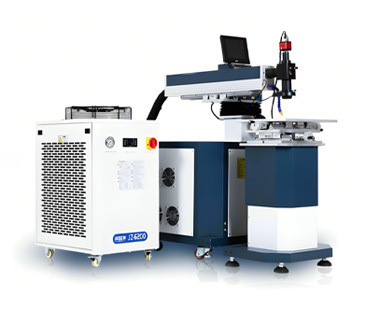The Essential Guide to Mold Repair Laser Welding Equipment: Unlocking Precision and Efficiency
Release time:
2025-05-20
The Essential Guide to Mold Repair Laser Welding Equipment Table of Contents 1. Introduction to Mold Repair Laser Welding 2. Understanding Laser Welding Technology 3. Benefits of Laser Welding in Mold Repair 4. Key Components of Laser Welding Equipment 5. Choosing the Right Laser Welding Machine 6. Laser Welding Techniques for Mold Repair 7. Common Challenges and Solut
The Essential Guide to Mold Repair Laser Welding Equipment
Table of Contents
- 1. Introduction to Mold Repair Laser Welding
- 2. Understanding Laser Welding Technology
- 3. Benefits of Laser Welding in Mold Repair
- 4. Key Components of Laser Welding Equipment
- 5. Choosing the Right Laser Welding Machine
- 6. Laser Welding Techniques for Mold Repair
- 7. Common Challenges and Solutions in Mold Repair
- 8. The Future of Laser Welding Technology in Mold Repair
- 9. Frequently Asked Questions (FAQs)
- 10. Conclusion
1. Introduction to Mold Repair Laser Welding
Mold repair is a critical component in various industries, particularly in manufacturing and production. The importance of maintaining molds cannot be overstated; they are integral to ensuring product quality and consistency. Traditional mold repair techniques often fall short regarding precision and efficiency, leading to extended downtime and increased costs.
Mold repair laser welding equipment has emerged as a transformative solution in this realm. This guide delves into the nuances of laser welding technology applied to mold repair, highlighting its advantages, essential components, and the future of this innovative technique.
2. Understanding Laser Welding Technology
Laser welding is a process that utilizes focused laser beams to join materials together. The precision of laser technology allows for minimal heat input, reducing the risk of thermal distortion and damage to surrounding areas.
There are different types of lasers used in welding, including:
- **Fiber Lasers:** Known for high efficiency and excellent beam quality, fiber lasers are ideal for welding various metals.
- **CO2 Lasers:** These lasers are highly versatile and can weld, cut, and engrave a wide range of materials.
- **Nd:YAG Lasers:** Neodymium-doped Yttrium Aluminum Garnet lasers provide powerful energy and are suitable for deep penetration welding.
Each type of laser has unique applications and benefits, making it essential to choose the right one for specific mold repair tasks.
3. Benefits of Laser Welding in Mold Repair
The adoption of laser welding in mold repair offers numerous advantages:
3.1 Enhanced Precision
Laser welding allows for incredibly precise repairs, ensuring that even the smallest defects in molds are addressed effectively. This precision minimizes the likelihood of further issues arising from poorly executed repairs.
3.2 Reduced Heat Affected Zone (HAZ)
One of the significant benefits of laser welding is the reduced heat-affected zone. The focused nature of the laser beam means that heat is applied only to the welding area, preventing damage to the mold's structural integrity.
3.3 Increased Efficiency
Laser welding typically requires less time compared to traditional welding methods. This efficiency translates to lower labor costs and reduced downtime, allowing manufacturers to return to production more quickly.
3.4 Versatility in Material Types
Laser welding is suitable for a wide range of materials, including steel, aluminum, and thermoplastics. This versatility makes it an attractive option for various industries requiring mold repair.
3.5 Improved Finish Quality
Laser welding results in a cleaner finish with minimal post-processing required. This quality is particularly crucial for molds that require a smooth surface to ensure product quality.
4. Key Components of Laser Welding Equipment
Understanding the essential components of laser welding equipment is critical for efficient operation:
4.1 Laser Source
The laser source is the heart of the equipment, generating the laser beam used for welding. The choice of laser source (fiber, CO2, or Nd:YAG) affects the equipment's overall performance and suitability for specific applications.
4.2 Focusing Lens
The focusing lens is responsible for concentrating the laser beam onto the workpiece. The lens's focal length and diameter impact the beam's spot size and energy density, crucial for successful welds.
4.3 Control System
A sophisticated control system allows for precise adjustments in welding parameters such as power, speed, and pulse duration. This level of control is essential for achieving consistent results.
4.4 Cooling System
Laser welding generates heat, which can damage components if not managed correctly. A reliable cooling system ensures that the equipment remains within safe operating temperatures.
4.5 Safety Features
Safety is paramount when operating laser welding equipment. Built-in safety features such as protective enclosures, emergency shut-off mechanisms, and laser safety glasses are essential for operator protection.
5. Choosing the Right Laser Welding Machine
Selecting the appropriate laser welding machine involves considering several factors:
5.1 Assessing Your Needs
Before investing in laser welding equipment, it's crucial to assess your specific mold repair needs. Consider factors such as the types of materials you'll be working with, the scale of repairs, and the desired level of precision.
5.2 Budget Considerations
Budget constraints will play a significant role in your equipment choice. While it's essential to invest in quality machinery, balancing performance with cost-effectiveness is vital.
5.3 Brand Reputation and Support
Opt for reputable brands known for their laser welding equipment. Reliable after-sales support and service availability can significantly impact your operational efficiency.
5.4 Future Scalability
Consider your future needs when selecting a machine. Investing in scalable technology can save costs in the long run as your business grows and requirements evolve.
6. Laser Welding Techniques for Mold Repair
Implementing the correct laser welding techniques is essential for optimal results:
6.1 Keyhole Welding
Keyhole welding involves creating a small hole in the workpiece, allowing a concentrated beam of energy to penetrate deeper. This technique is effective for thicker materials and provides strong joint formation.
6.2 Conduction Welding
This technique relies on the conduction of heat into the base material, achieving shallower welds. It is ideal for thinner materials and offers excellent control over the welding process.
6.3 Pulsed Laser Welding
Pulsed laser welding delivers energy in short bursts, allowing for better control over heat input. This technique is particularly useful for delicate mold repairs where overheating could cause damage.
6.4 Continuous Wave Welding
Continuous wave welding provides a steady laser beam, leading to faster welding speeds. This technique is well-suited for production environments requiring high throughput.
7. Common Challenges and Solutions in Mold Repair
While laser welding offers numerous advantages, it is not without challenges. Understanding these challenges and their solutions can enhance your welding operations:
7.1 Proper Material Preparation
Inadequate preparation can lead to poor weld quality. Ensure that surfaces are clean and free of contaminants before welding. Utilizing proper cleaning methods can mitigate this issue.
7.2 Overheating and Distortion
While laser welding reduces the heat-affected zone, overheating can still occur. Adjusting welding parameters, such as speed and power, can help control heat input and reduce distortion.
7.3 Equipment Calibration
Regular calibration of equipment is essential to ensure consistent results. Implement a maintenance schedule to keep your laser welding machine operating at peak efficiency.
8. The Future of Laser Welding Technology in Mold Repair
The landscape of laser welding technology continues to evolve, driven by advancements in industry and manufacturing processes:
8.1 Automation and Robotics
The integration of automation and robotics in laser welding is on the rise, enhancing precision and productivity. Automated systems can handle repetitive tasks, allowing skilled operators to focus on more complex operations.
8.2 Smart Technology Integration
Smart technology, including sensors and AI, is becoming increasingly popular in laser welding. These innovations can monitor welding parameters in real-time, optimizing the process for improved outcomes.
8.3 Sustainability and Eco-Friendly Practices
As industries move towards sustainability, laser welding technology is evolving to meet eco-friendly standards. The reduced energy consumption and waste associated with laser welding make it a greener option compared to traditional methods.
9. Frequently Asked Questions (FAQs)
9.1 What is laser welding, and how does it work?
Laser welding is a process that uses focused laser beams to join materials. The laser energy melts the metal at the joint, allowing it to fuse as it cools.
9.2 What are the advantages of using laser welding for mold repair?
Laser welding offers enhanced precision, reduced heat-affected zones, increased efficiency, versatility in material types, and improved finish quality.
9.3 How do I choose the right laser welding machine for my needs?
Consider your specific mold repair needs, budget, brand reputation, and future scalability when selecting a laser welding machine.
9.4 What are the common challenges faced in laser welding?
Common challenges include material preparation, overheating, and equipment calibration. Each of these can be addressed through proper practices and regular maintenance.
9.5 What is the future of laser welding technology?
The future of laser welding technology includes increased automation, smart technology integration, and a focus on sustainable practices.
10. Conclusion
Mold repair laser welding equipment represents a significant advancement in the manufacturing sector, providing unparalleled precision and efficiency. By understanding the technology, selecting the right equipment, and employing effective techniques, businesses can enhance their mold repair processes. As the industry continues to evolve, embracing innovations will be essential for maintaining a competitive edge in mold repair and production. Investing in laser welding technology not only addresses current needs but also positions businesses for future growth and sustainability.
Key words:
- All
- Product Management
- News
- Introduction
- Enterprise outlets
- FAQ
- Enterprise Video
- Enterprise Atlas
Recommend News





Contact Us
Phone: +86 (China) 152-5267-7152
WhatsApp: +86 (China) 152-5267-7152
E-mail:info@udibomfg.com
Address: Building 1002 Redstar International Technology Park, Mudu Town, Wuzhong District, Suzhou City, Jiangsu Province, China





